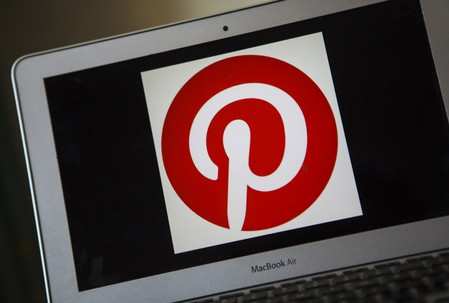
Pinterest set a price range for its initial public offering that will value the company below its last private-market peg of $12 billion, raising questions about investor demand for prominent but unprofitable technology companies that are stampeding toward the stock market.
In an updated prospectus Monday, Pinterest said it planned to price its offering at $15 to $17 a share. At the high end of that range, the digital pin board company would be valued at about $11.3 billion, accounting for stock options and restricted stock. The business was first valued at $12 billion in 2015, and again in 2017, by venture capitalists and other private investors.
Pinterest’s price range dampens some of the fervor over a wave of tech offerings this year, which had promised to generate piles of new wealth in Silicon Valley. It follows last month’s IPO of Lyft, the ride-hailing company, which is deeply unprofitable. While the offering created a great deal of hype and Lyft’s shares rose on their first day of trading, the stock fell below its offering price on its second day of trading, as it faced questions about its business.
“People are looking at Lyft and realizing that even if the road show goes extremely well and there is a lot of demand, you can’t overprice the offering,” said Elliot Lutzker, corporate and securities partner at Davidoff Hutcher & Citron.
He added that investors were looking more at business fundamentals. “Not every company is an Amazon that can afford to lose money for years and years while growing,” he said.
How Lyft and Pinterest perform in their public debuts will be critical in the lead-up to the public offering of Uber, the largest of this generation of tech startups. Uber is expected to go public in the next few months at a valuation of about $120 billion, in what would be the biggest IPO by a U.S. company.
Several other smaller companies are also planning public offerings, including Zoom, a video conferencing company; PagerDuty, a software company; and Slack, an office communications company.
Pinterest’s filing Monday coincided with the beginning of the company’s road show, during which it plans to pitch institutional investors before the company’s final IPO pricing and first day of trading. High demand from investors during the next several days could lead the company to raise the price of its shares.
At the midpoint of its price range, the company would raise about $1.2 billion from public market investors. Pinterest also has $628 million in cash on its balance sheet.
If Pinterest goes public below its last private market valuation, that will not be a first for this generation of highly valued startups. Box, a cloud storage company, went public in 2015 at $1.6 billion, below its $2.4 billion private market valuation. The company now trades at a $2.8 billion market capitalisation. Square, a payments company that was worth $6 billion in the private market, went public in 2015 at a $2.9 billion valuation. Square now has a $31 billion market capitalisation.
In total, private investors have poured about $1.5 billion into Pinterest. A market debut below $12 billion could spell a loss for the ones that invested most recently.
But the company’s earlier investors will still see huge paydays. In its updated prospectus, Pinterest revealed the ownership stakes of its biggest shareholders, which include venture capital firms Bessemer Venture Partners, FirstMark Capital and Andreessen Horowitz. At the midpoint of the proposed IPO price range, Bessemer’s stake would be worth $952 million, FirstMark’s would be worth $710 million and Andreessen’s would be $696 million.
The biggest individual shareholder is Ben Silbermann, Pinterest’s 36-year-old CEO and co-founder. He owns 11.4 percent of Pinterest’s shares, making his stake worth $825 million at the midpoint of the pricing range. Evan Sharp, 36, another co-founder and the chief design and creative officer, owns 2.1 percent of the company.
Pinterest, which makes digital pin boards that allow people to save images and links from around the web, took off in about 2011. Pinners, as users are known, create collage like mood boards on topics like food, events and hobbies. Silbermann, who has taken a conservative approach to spending and growth, sought to build the company slowly. In 2014, Pinterest began selling ads.
Silbermann’s methods contrasted with those of other entrepreneurs who lead companies known as unicorns, which are valued at more than $1 billion by private investors. Such companies have typically put a priority on fast growth over profits and take many years to go public. Unicorns that sell or go public below their last private valuation are known as undercorns.
Like its peers, Pinterest loses money. But the company, which generates revenue from advertising, is burning less cash than Lyft or Uber. In March, Pinterest revealed it lost $63 million on revenue of $756 million in 2018. Pinterest is also growing quickly, reporting a 60 percent jump in revenue from 2017 to 2018.
The company plans to list its shares on the New York Stock Exchange under the symbol PINS.

No comments:
Post a Comment